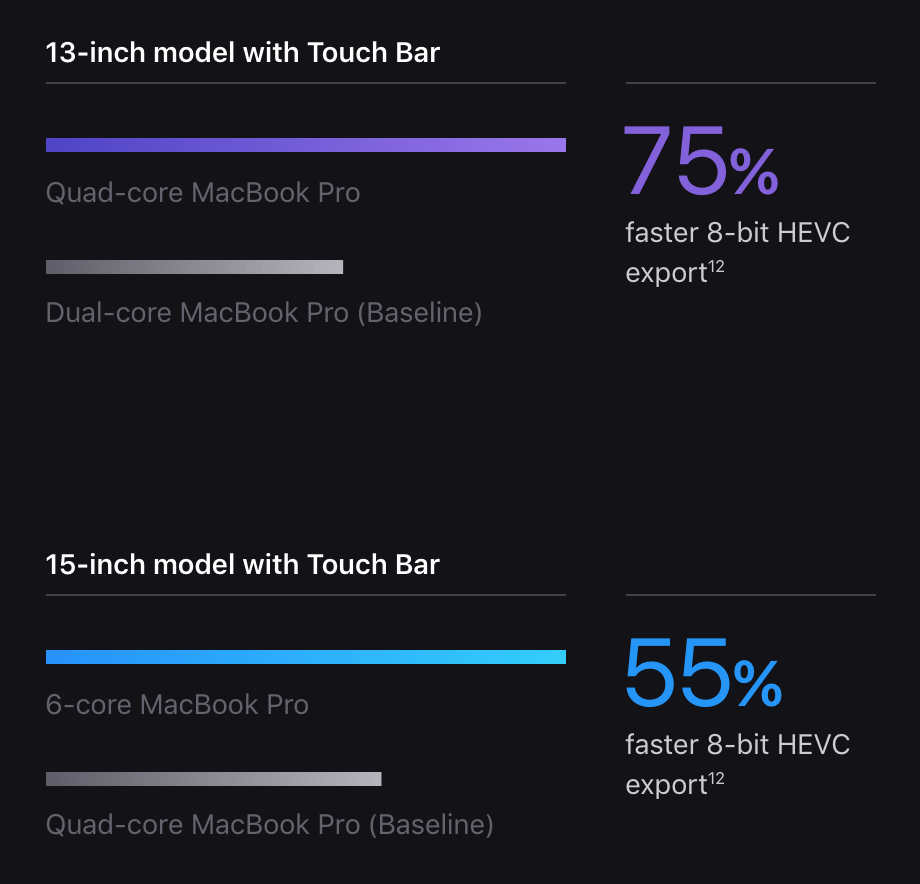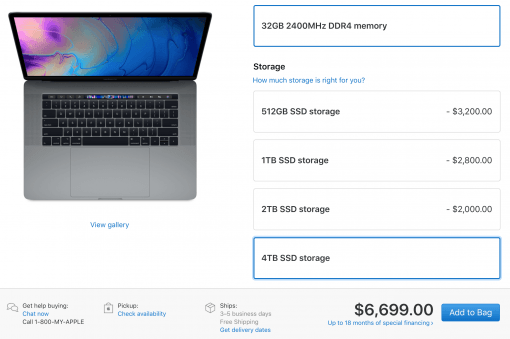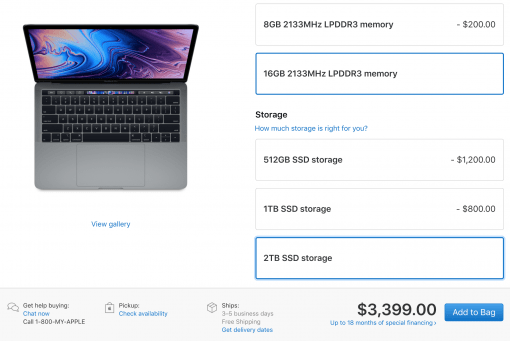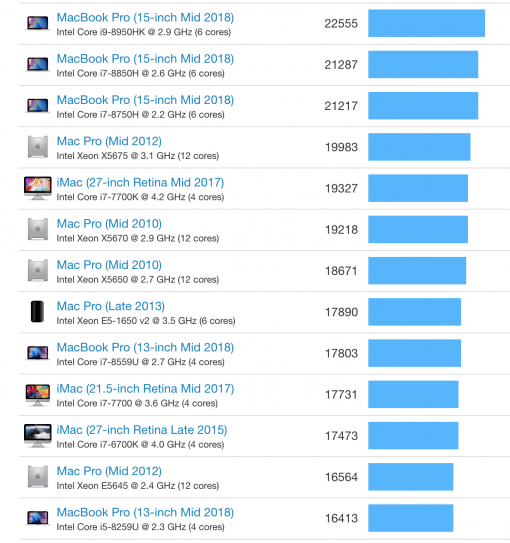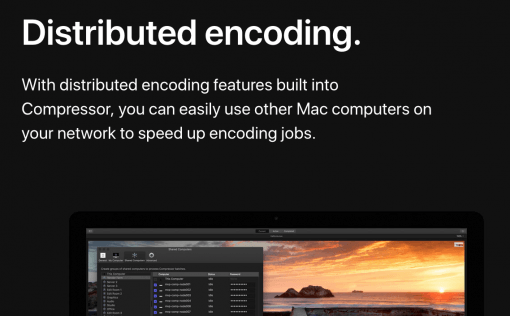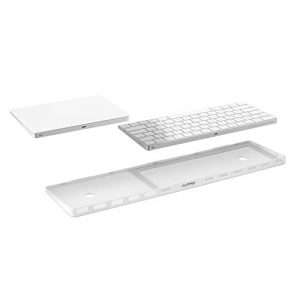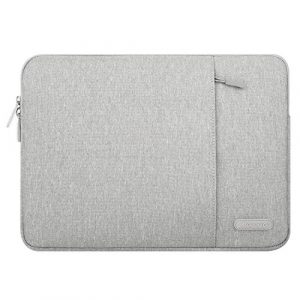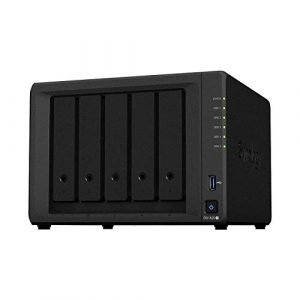Sounds crazy? Maybe the first time you hear it. If you really are a hardcore user, you might actually find our proposal useful though.
We split our budget between two smaller MacBook Pro models
Our starting point was playing around in Apple’s configurator. We simply chose the 15″ inch model with all the extras, including a 4 TB SSD, and the price was just under 6,700 euros. Immediately we had the thought: “For that money I could get two 13-inch models!”. Is that really true? And does it make sense or is it just a fun thought? Since we did not have a high enough test budget, these considerations have not been tried out in practice. They are meant for you as a thought-provoking idea and maybe someone will try out the configuration in practice.
For the 15″ model we have chosen the following technical equipment, you could say we checked all the boxes:
- 2.9 Ghz 6 Core i9
- 32 GB RAM
- Radeon Pro 560X
- 4 TB SSD
This results in a final price of 6,699 dollars. For the 13″ model we did not choose the top equipment, so that we get to about half the price of the bigger brother. The components look like this:
- 2.3 GHz Quad Core i5
- 16 GB RAM
- Iris Plus Graphics 655
- 2 TB SSD
The price then is 3,399 dollars and therefore 100 bucks more than 15″ model if we bought two MacBooks, but we don’t want to be petty. Now the 6,800 dollar budget has been distributed differently. What’s in it for you now?
If you look at the Geekbench 4 benchmark of the processors used (top and bottom of the graphic), you can see that in the 15″ model it is much faster, but when you buy two 13″ models you get 32,825 points, which is considerably more than the 6-core processor alone. That’s logical, after all, you have two times four cores.
Things are a little different with the graphics: There are no separate graphics cards in the small MacBook Pros. That means in our case we have to be happy with Intel’s Iris Plus Graphics 655 in both computers. However, this is now as fast as the separate graphics cards of the 2015 models, but much slower than the Radeon Pro 560X in the current model. However, we have two of them! Theoretically, the two small GPUs would have to perform approximately like a Radeon Pro. That remains to be tested in real life, of course.
Same GPU performance,
better CPU power,
more display real estate
With the displays we get more for the money again, if we split the budget: the 15″ display offers almost 5.2 million pixels, the two 13-inch machines together almost 8.2 million, thus some more.
The 4TB SSD is distributed to either one or two devices, the latter is not necessarily a disadvantage. For example, one of the smaller 13″ models can be used to collect data on the set before cutting on both. The connection between the two can be established via Thunderbolt cable, so that the speed ideally adds up – another advantage for the double MacBook setup.
The question arises as to how the whole thing works in practice: The connection to two power supplies and the connection via Thunderbolt cable should be done in a few seconds. Using the computing power is also easier than expected: Apple even explicitly provides the function for Compressor to use computing power on other devices. Here are the official instructions. Using both Macs from one device is also relatively easy: with Synergy, the mouse pointer moves from one device to another without being stopped.
But there is one little catch: We would like to have it set up so that you could use the second Mac as a second display. However, this is currently not easily possible. There is the ScreenRecycler software, but it can only run up to macOS 10.10. So you can only use Final Cut on the first computer but still use the computing power of the second one later with Compressor. Or you can cut on both projects at the same time and if one is already computed, both computers are busy.
Build a small cluster with your budget
The bottom line is that this idea may not be so stupid as we thought in the beginning, but it also depends heavily on your usage habits and the software you use, which must allow you to outsource arithmetic operations to another Mac. For the same price you don’t necessarily get more GPU power on two Macs, but roughly 30% more CPU processing power, 50% more screen space, parallel usable SSDs and two complete Macs.
Two MacBooks instead of one.
The double configuration works to a certain extent even if your budget is smaller and you mainly need computing power, for example, because you already have a good storage setup of your own. For example, you could compare a 15-inch MacBook Pro with 2.9GHz i9, 32GB RAM, Radeon Pro 560X, and 512GB SSD for 3,499 dollars to two 13-inch MacBook Pro with 2.3 quad-core, 16GB RAM, and 256GB SSD for 1,999 dollars each.
Let us know what you think of our idea in the forums. It is crazy or could you imagine using it?
